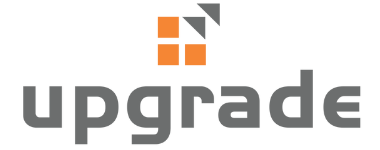“AI” a.k.a “Artificial Intelligence” a.k.a “Augmented Intelligence” is the current HR buzzword. As a self-confessed follower of everything digital in HR, I have scoured the web to track the developments in AI in staffing technology. There are dozens of start-up’s and established technology companies who are at various stages of developing a working solution to solve the recruiter’s and hiring manager’s problems using AI.
The benefits of AI in HR/staffing technology are undeniable and something I as a practicing HR professional eagerly look forward to. Some of the benefits we will derive from AI in staffing range from – drastic savings in effort/time of a recruiter, removing bias in selection, increase in employee referrals, improving quality of hire by providing better matching of candidates to job roles, identifying passive talent pools from the open web and ranking candidates based on their recommendations & contributions on platforms such as LinkedIn, StackOverflow, GitHub, Behance, etc. The spillover effect can be seen in the form of reduction in attrition, increase in engagement, productivity and a lot more.
Do check out my 6 part series on AI in Staffing to understand the application of AI. Beyond the acronyms, jargon and jingoism what are the important aspects which one must look out for while evaluating any AI based recruitment solution:
AI Technology in Staffing is still “work in progress”: To make sense of all the text in a JD (Job Description) and try to match candidates is not as easy as it is made out to be – With or inspite of AI! manager’s & recruiter’s utilise existing JD’s or download JD’s from the web with minimal tweak, this results in a “generic” JD and hence the results are also generic and not a perfect match for the role.
Tech Focus: Most, if not all AI tools in this wave are focused on technology jobs. Domains such as BFSI, Manufacturing, Retail, Health Sciences, et.al are not the focus for the early stage developers.
Manual Intervention: The AI tools only identify the candidates and point you to their social profiles. the BIG gap is in not having the contact information – it’s time consuming to send a request to a candidate and wait for him/her to accept. AI companies are employing mules in the back end to do the bridging that the tool falls short on – such as, helping contact the shortlisted candidates, selling the job and the company, salary expectations, location preferences, etc.,.
Volume Hiring: The instant you say “volume” you are talking “speed” and “active talent”. And for that, traditional job portals would work just fine. And in cases where the AI tool has a robust candidate ranking system built into it , it’s worthwhile to aggregate profiles from multiple sources into the AI tool and have it wave its “AI magic” wand, to give you a top ranked shortlist to work with.
Invest in Deep Learning: AI tools are programmed to learn the nuances, preferences, behaviour from users. This requires time and effort investment from the users through multiple data feeds / reviews. Your first few attempts may very well turn up results that do not get you excited. “Patience” is often the key word here. It helps if you have the AI company co-locate someone at your premises for a period of 1-2 months.
Pricing & ROI: There are basic tools available for as little as $100 per year to some that can cost you as high as $30,000 per year. Some tools are vanilla search tools – plug-in to your chrome browser, it helps you write a boolean search string – which you can use across google, Linkedin, Behance, GitHub, Stackoverflow, etc., some have morphed into a cloud based ATS (Applicant Tracking System) which help you copy paste the JD, rank the candidates from various sources, invite them for online assessments, etc., and then there are the pricier tools which identify suitable candidates from the social media networks & help engage candidates.
AI & HRMS/ATS Integration: For a corporate user, a big show stopper or challenge is the myriad tools one must deal with – HRMS, ATS, Job Portals, Emails, etc., when you add an AI tool into the mix without active integration to the HRMS/ATS, you are complicating the job of the recruiter rather than simplifying it with technology.
Start-ups & Sustenance: After a promising start, more than one company working on AI in staffing has either wound up or is unable to invest further in the product. Having invested in an evolving technology, expectations are high – so are the costs!
Any innovation comes with issues – even Apple faced resistance when it launched iPhone! I am sure brilliant minds are at work to solve some if not all the issues I listed above in my limited research. What’s important is for HR users to embrace the new technology and prepare themselves to be early adopters of this digital disruption.
I have attempted to highlight the gaps and unsolved parts of the puzzle in this post for the benefit of practicing HR professionals & AI specialists. Follow us @upgradehr or contact us if you want to discuss your AI solution or need help evaluating one. I am happy to hear from you and if you think I am wrong or missed something, enlighten me and my fraternity.

